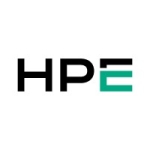It's the performance that we need. Before, we had another system and we noticed that the performance wasn't enough, so now we have two types of 3PAR systems, the 20850 all-flash and also the 8450 all-flash. We can really see that the performance is much, much better and the latencies are much lower. That's what we needed.
The performance.
The new interface, the OneView, is a nice interface.
The command line is very extensive, a lot of tools so in comparison to other vendors. It's one of the great things about 3PAR, that you can really drill down on performance, get statistics, really know how your system is internally performing. You don't need to wonder what is happening, you can really see it inside.
For performance it's all okay, but we are also hoping for the compression feature, hoping that we can have not only good performance but also more gain in our capacity; we are still waiting for it to be deployed.
We have had a painful migration to transform from the old way of doing dedupe, in version 2, to the new way of doing dedupe; and also getting rid of the old CPGs with the old way of storing the data. So it's a bit painful, cost a lot of manpower to do it.
One big thing that we really need - it's a simple thing - is longer names for our volumes. Now they're only 28 characters and we try to have the same name convention as our VMware guys, the datastore names. We want the same name, but if we want to create a SnapShot, and we want to add something - an underscore or something like that and maybe another number - then we have issues. It's only 28 characters and we then hit our limit. Twenty-eight is too low nowadays. I will ask our Technical Account Manager to do an enhancement on that. It should be 64, or at least more than 32 characters.
It sounds simple but, somehow, I think it's a deeper integration issue and it's not so easy to change. But I need to ask for it because now we are trying to use SnapShots for copying production data to servers and we need those extras, a space, character spaces, to create a longer name.
One to three years.
We haven't had any downtime. There have been some small issues sometimes with an upgrade, a link went down but we didn't investigate further. Or sometimes we send it to support but it takes too long. But no downtime, not like we hear from other customers. Sometimes they really have a node that reboots; or our colleagues in Hungary, they had some issues, but we haven't had any downtime or the like with our 3PAR systems. We're happy about that.
Setup was very easy. I think even for the 8450 - we had also prepared ourselves -but in one day we had installed everything and it was up and running. So it's easy to set up.
I rate it about seven out of 10. It's not bad but it's also not the best. We had some issues, now they are resolved, but one issue existed for a year. We needed to migrate everything, and all the extra work needed to be done by our VMware colleagues, and they would not be so happy if we ask again to transform something.
Also some things were promised, like turning on/turning off dedupe and compression on the fly. But now it will create another one, compress, and then migrate it via the VMware tools. So we are really depending on vMotions. We wanted to remove the load from our VMware colleagues so that we could say, we will do the transformation to compress, you don't need to worry.











